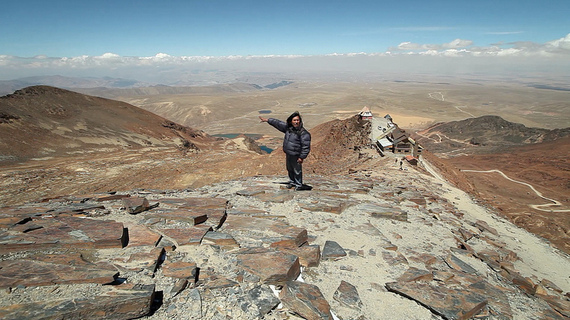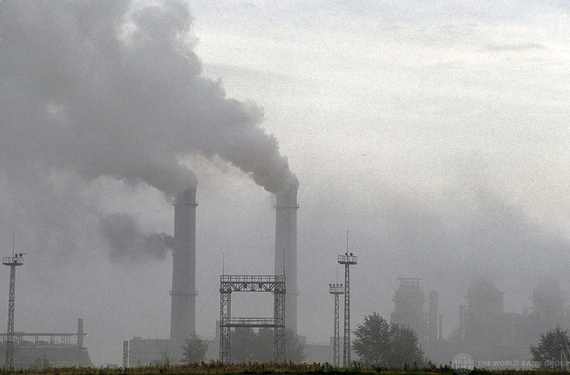
Chacaltaya Mountain, which stands 5,400 meters above sea level in the Cordillera Real of the Bolivian Andes, has lost all the ice in the last two decades
You probably have heard this line before many times: "Human history becomes more and more a race between education and catastrophe". But on matters of climate change, H. G. Wells' famous quote is never more apt.
When it comes to the climate change crisis, science has not triggered a societal tipping point yet, and countries continue to grapple with more extreme weather events, warmer and longer summers, and severe changes in rainfall patterns that are increasing food security and infrastructure risk. Rising temperatures, ocean acidification and other ecosystem changes are setting species on a path to extinction never observed in millions of years.
I recently warned in this blog about the rapid rise of greenhouse gas concentrations, and pointed out that known solutions are not set to meet the required level to slow climatic disruption.
People have taken to the streets to voice their concerns. In September, with the backdrop of the UN's Secretary Climate Summit, thousands of concerned citizens marched in New York City and around the globe to raise awareness on the issue of climate change.
As this and other efforts pick up momentum, more robust scientific evidence released by the Intergovernmental Panel on Climate Change (IPCC), paint a sobering scenario.
To stay below the 2-degree target, and at manageable costs, we need to cut greenhouse gas emissions between 40 percent and 70 percent by 2050 (as compared to 2010 levels), and to zero or below by 2100. Needless to say, this is a very tall order, especially when confronted with what nations have so far been willing to do.
But there are indications that change may be coming, as attested by the multiple commitments made in New York, along with a political atmosphere that is becoming more conducive to a new and more powerful international agreement. This agreement could be signed during the meeting of the parties to the United National Framework Convention on Climate Change (UNFCCC), to be held in Paris in 2015 -- anchored on "intended nationally determined contributions" (INDCs), a political aphorism to mean a country's intention to lower its overall emissions against a predetermined baseline.
From December 1-12, 2014, nations will gather in Lima, Peru for the last Conference of the Parties to the climate convention before the landmark agreement expected in Paris. What happens there will become a barometer for Paris within a year.
As a growing share of emissions is now coming from developing countries, they have become more receptive to doing their share to address the climate challenge. At the same time, developed countries still tend to have higher per capita and cumulative emissions, and will continue to be a big part of the required solution.
In a historic agreement involving the United States and China, the latter agreed to cap its emissions by 2030, if not earlier. China has been the greatest polluter for a few years now, but this is the first time it is willing to come forward with a proposal to curtail within the foreseeable future. The United States is, in turn, pledging to reduce its own emissions between 26 percent and 28 percent below 2005 levels by 2025.
There is one aspect that firmly unites developing countries: to change their development paths towards low-carbon, resilient economies, for example by leapfrogging from cheaper but highly polluting sources of energy to cleaner and renewable ones, they have been consistent in their requirement for financial assistance -- including technology transfer -- from the developed world. This support is considered essential for these nations to make the necessary transition while improving economic conditions, together with addressing impacts of climate change through adaptation responses.
The Global Environment Facility (GEF) has been an early player, providing more than $4 billion in grants to developing countries in support to mitigation and adaptation projects, along with building the capacity of more than 168 developing countries and economies in transition. For the next four years, the GEF is prepared to make about US$3 billion available to developing countries, and leverage up to US$30 billion from other sources, helping to accelerate climate finance during this critical period.
And there is more to come. In order to significantly enhance availability of financial assistance to developing countries, the Green Climate Fund (GCF) was created to operate, alongside the GEF, as a financial mechanism to the climate change convention. On November 20, pledges from 21 countries were announced, with a total of $9.3 billion committed to the GCF.
The pledges made by the United States, Japan, Germany, the United Kingdom, France and many others are being seen as an important milestone for the ongoing negotiations to move towards a global climate agreement. The GCF will have a particularly important role in unlocking private sector resources considered essential to achieve market-level transformation required to meet the targets set by parties to the convention.
The GEF will complement the work of the GCF, expected to become operational at the end of 2015.
The impetus provided by more robust emission reduction commitments by developed and developing countries, coupled with significantly augmented climate financing, opens up a bright spot we haven't seen in many years. With this, there is hope we will not have to face major catastrophes before triggering belated and much more costly action.

